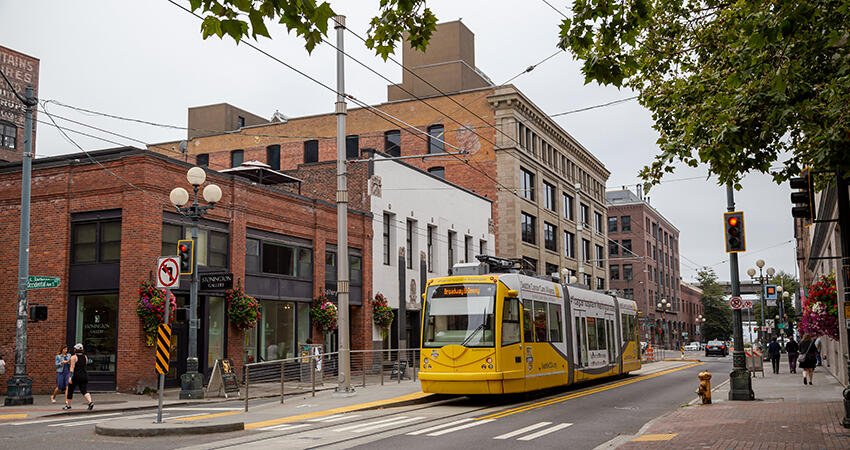
CineCam/Shutterstock
How Transit-Oriented Development Can Promote Equitable, Healthy Communities
- Title:
-
The Color of Health: Residential Segregation, Light Rail Transit Development, and Gentrification in the United States
- Author:
-
Shadi O. Tehrani, Shuling J. Wu, and Jennifer D. Roberts
- Source:
- Publication Date:
-
2019
Where people live can significantly affect their health, well-being, and upward mobility. Cities have invested in transit-oriented development (TOD) to spur growth, revitalize neighborhoods, and promote healthy communities. Although the goal of TOD is often neighborhood revitalization and renewal, these strategies can inadvertently result in increasing rents and house values, residential or cultural displacement, and the widening of disparities in neighborhood resources, such as parks, as well as health outcomes, including obesity, among low-income communities and communities of color. A limited amount of evidence documents how gentrification might be a direct consequence of policies that boost transit, in part because of challenges defining and measuring gentrification. In addition, few studies examine health-related outcomes for families living in neighborhoods where TOD sparks gentrification. In response, this study analyzed existing literature on patterns of racial residential segregation and the implications of TOD for residents’ health and well-being. The authors offer policy solutions to mitigate the negative consequences of gentrification and drive equity, stability, and opportunity in neighborhoods.
Key findings
- Predominately African American neighborhoods often lack essential civic infrastructure, and their residents have shorter life expectancy and worse health conditions than residents of white neighborhoods.
- Gentrification that results from TOD can be measured by changes in household income, property values, new housing construction, and educational attainment around a transit center. This occurs more frequently in communities of color than in predominantly white neighborhoods.
- Populations displaced by gentrification as a result of TOD are more likely to experience worse health (lower life expectancy and higher rates of cancer, birth defects, infant mortality, and incidents of disease) than those who remain in place.
- Reports of positive health outcomes among white residents may reflect that most studies measure outcomes of residents remaining in a gentrified neighborhood, not those who have been displaced.
Policy and programmatic recommendations
- Citywide health inequities cannot be improved by siloed neighborhood renewal strategies. They require local-government-led policy reforms and targeted funding to support social equity investments.
- Low-income families are more likely to remain in place, close to transit stations, when government imposes affordability requirements on TOD. This more effectively stabilizes families as prices increase than housing vouchers.
- Before TOD begins, local governments can deploy policies such as inclusionary zoning, mixed-use housing development, and property-tax relief to maintain land affordability and incentivize affordable housing development.
- TOD can promote equitable development and healthy communities by informing, involving, and collaborating with local residents and their community representatives to ensure the development is both inclusive and sustainable.
Housing Matters usually uses the term Black but are using African American to align with the study and authors’ preferences.


